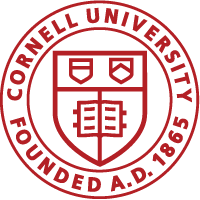We are developing 3D imaging techniques that can probe the mechanical properties of tissues and cell cultures / engineered tissue constructs. These techniques can be utilized to provide semi-quantitative images of important parameters (e.g. displacement or strain maps) that depend on the underlying mechanical properties, or, through additional measurements or in combination with mechanical modelling, provide a map of quantitative mechanical properties (e.g. the complex shear modulus).
Dynamic OCE and mechanical spectroscopy. Dynamic OCE (dOCE) employs audio frequency (20Hz – 20kHz) mechanical loading (‘palpation’) to excite harmonic motion which is ‘fast’, relative to the characteristic micron-scale motion artifacts inherent to in vivo imaging. Another advantage includes the ability to differentiate between mechanically distinct regions of tissue via mechanical spectroscopy, i.e. by varying the frequency of mechanical loading. The resulting hyperspectral datasets can provide additional information through the measurement of a mechanical spectrum at each spatial location, which adds an extra dimension to the acquired OCE dataset.
The application of a sinusoidally varying force (mechanical excitation) to the sample and the corresponding spatially-localized response shown for a given depth (top left) , and (top right) acquisition of a hyperspectral dataset with spectroscopic OCE. (Bottom row) Mechanical spectroscopy of a rat mammary tumor margin.
Relevant papers
- Schmitt, J.M., “OCT elastography: imaging microscopic deformation and strain of tissue”. Optics Express, 3(6):199-211, 1998.
- Adie S.G., Kennedy B.F., Armstrong J.J., Alexandrov S.A. and Sampson D.D., “Audio frequency in vivo optical coherence elastography”, Physics in Medicine and Biology, 54:3129-3139, 2009.
- Liang X., Adie S.G., John R. and Boppart S.A., “Dynamic spectral-domain optical coherence elastography for tissue characterization”, Optics Express, 18(13):14183-90, 2010.
- Adie S.G., Liang X., Kennedy B.F., John R., Sampson D.D. and S.A. Boppart, “Spectroscopic optical coherence elastography”, Optics Express, 18(25):25519-34, 2010.
- Kennedy B.F., Liang X., Adie S.G., Gerstmann D.K., Quirk B.C., Boppart S.A. and Sampson D.D., “In vivo three-dimensional optical coherence elastography”, Optics Express, 19(7):6623-34, 2011.
Mechanical modelling and model-independent approaches. In order to extract meaningful diagnostic information that reflect the underlying mechanical properties, one approach is to compute strain maps. Ideally, however, the calculation of quantitative mechanical properties are desired at each spatial location. This can  be accomplished by adopting a mechanical model that captures the physics governing the sample response. In reality, current mechanical models only capture the underlying behavior of a limited range of viscoelastic media, or are specific to a given sample geometry, and are generally only applicable within a fixed parameter space (e.g. different mechanical models may be required to describe the low-frequency (below ~ 500 Hz) and higher frequency (> 1 kHz) responses of biological tissues). Alternatively, the amplitude or phase of the spatially-localized (complex) mechanical response/compliance can provide a model-independent approach to distinguish between regions of a sample with distinct biomechanical properties. We are also interested in exploring how the extra dimension of information afforded by spectroscopic OCE can be exploited to provide spatially localized maps reflecting the underlying viscoelastic properties of biological tissues and phantoms.
be accomplished by adopting a mechanical model that captures the physics governing the sample response. In reality, current mechanical models only capture the underlying behavior of a limited range of viscoelastic media, or are specific to a given sample geometry, and are generally only applicable within a fixed parameter space (e.g. different mechanical models may be required to describe the low-frequency (below ~ 500 Hz) and higher frequency (> 1 kHz) responses of biological tissues). Alternatively, the amplitude or phase of the spatially-localized (complex) mechanical response/compliance can provide a model-independent approach to distinguish between regions of a sample with distinct biomechanical properties. We are also interested in exploring how the extra dimension of information afforded by spectroscopic OCE can be exploited to provide spatially localized maps reflecting the underlying viscoelastic properties of biological tissues and phantoms.



